
Even among dedicated carnivores, organ meats -- also known as offal, or variety meats -- are a polarizing subject. Some cooks enthuse about their textures and distinctive flavors, while others shun them with equal passion. Preparation accounts for some of that distaste. A strongly flavored meat such as beef liver becomes undeniably bitter and funky when cooked to well-done. It's much more palatable cooked to a lesser degree of doneness.
Beef Liver
The liver is the body's nutritional distribution center, the place where nutrients are gathered for circulation to other organs. That makes it a nutritional powerhouse in its own right. Beef liver is one of the best dietary sources of vitamin A, folate and most of the B vitamins, and it has notably high levels of iron, phosphorous, copper, selenium and many other minerals. It's also very low in fat and calories. Even pan-fried, a 100 gram portion of beef liver -- just under 4 ounces -- contains only 175 calories, according to the U.S. Department of Agriculture's database. Its only nutritional downside is high levels of cholesterol.
Doneness
The USDA's Food Safety and Inspection Service recommends cooking beef liver to an internal temperature of 160 degrees Fahrenheit, to ensure food safety. That's because unlike muscle meats, where potentially harmful bacteria are found only on the surface, liver can harbor pathogens inside its tissues. Cooking to well-done is the only sure way to kill those bacteria. To put this into context for diners, strict adherence to the USDA's temperature guidelines would also eliminate rare steaks and any egg with a soft yolk. As with eggs and steaks, eating beef liver that's less cooked could -- but usually doesn't -- result in illness.
Cooking Beef Liver
Beef liver that's not cooked to at least medium-rare, or approximately 145 F, has a slightly metallic taste. At temperatures of 160 F or higher it begins to shed moisture, becoming chewy, dry and strongly flavored. It's most palatable when it's cooked to a temperature between those limits, which results in liver that's pink and visibly juicy when cut. How long it takes to reach that temperature varies depending on the cooking method and the thickness of the slices. Quarter-inch slices can be pan-fried to that doneness in just a few minutes, while half-inch slices baked in gravy might require 25 to 30 minutes. Use a thermometer to accurately confirm the internal temperature of the liver.
Preparing Beef Liver
Beef liver is usually sliced at the butcher shop or supermarket, and usually has most of its veins and protective membrane removed. If you see any visible portions of vein or membrane, cut them away with the tip of a sharp knife before cooking the liver. Soaking beef liver in milk before cooking makes it milder, a piece of longstanding folk wisdom. Soaking the liver in buttermilk or a light brine for at least 30 minutes before cooking can also improve the flavor. Pat the liver dry with clean paper towels before cooking it.
Food Safety
However you like your beef liver cooked, you can minimize your risk of foodborne illness through careful attention to food safety. If you live more than a few minutes from the store, take along a cooler and a gel pack to keep your liver cold on the way home. Scrub your hands, utensils and work surfaces carefully with plenty of hot, soapy water before and after handling the liver. Juices from the liver can harbor bacteria, so scrub anything that comes in contact with them. If the liver drips liquids onto any of your other foods, they're potentially contaminated and should be discarded.
Related Articles

How to Fry Liver

How to Cook Venison Liver
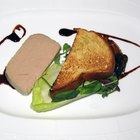
How to Keep Thawed Liver Before Cooking ...
How to Cook Liver in the Oven

Food Sources of Phosphatidylcholine
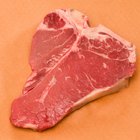
How to Broil Strip Steak

Can Lamb Chops Be Pink in the Middle?

What Are the Dangers of Eating Venison?

Extracting Bone Marrow for Cooking
How to Cook Liver & Onions Without Flour

What Part of Beef Is Kosher?
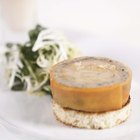
Can You Eat Raw Foie Gras?

How to Make a Blackbuck Antelope Roast
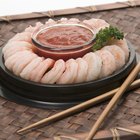
What Is the Dark Line on a Boiled ...

How to Cook Liver and Onions
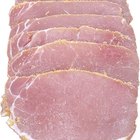
How Do I Tell If Pork Has Turned Bad?

What Is a Rib-Eye Steak?
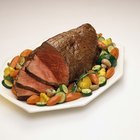
Can I Cook Beef at a Low Heat?
How to Grill Beef Liver
How to Cook Buffalo Fillet
References
- On Food and Cooking: The Science and Lore of the Kitchen; Harold McGee
- USDA Food Safety and Inspection Service: Beef from Farm to Table
Resources
Writer Bio
Fred Decker is a trained chef and prolific freelance writer. In previous careers, he sold insurance and mutual funds, and was a longtime retailer. He was educated at Memorial University of Newfoundland and the Northern Alberta Institute of Technology. His articles have appeared on numerous home and garden sites including GoneOutdoors, TheNest and eHow.
Photo Credits
Eising/Photodisc/Getty Images